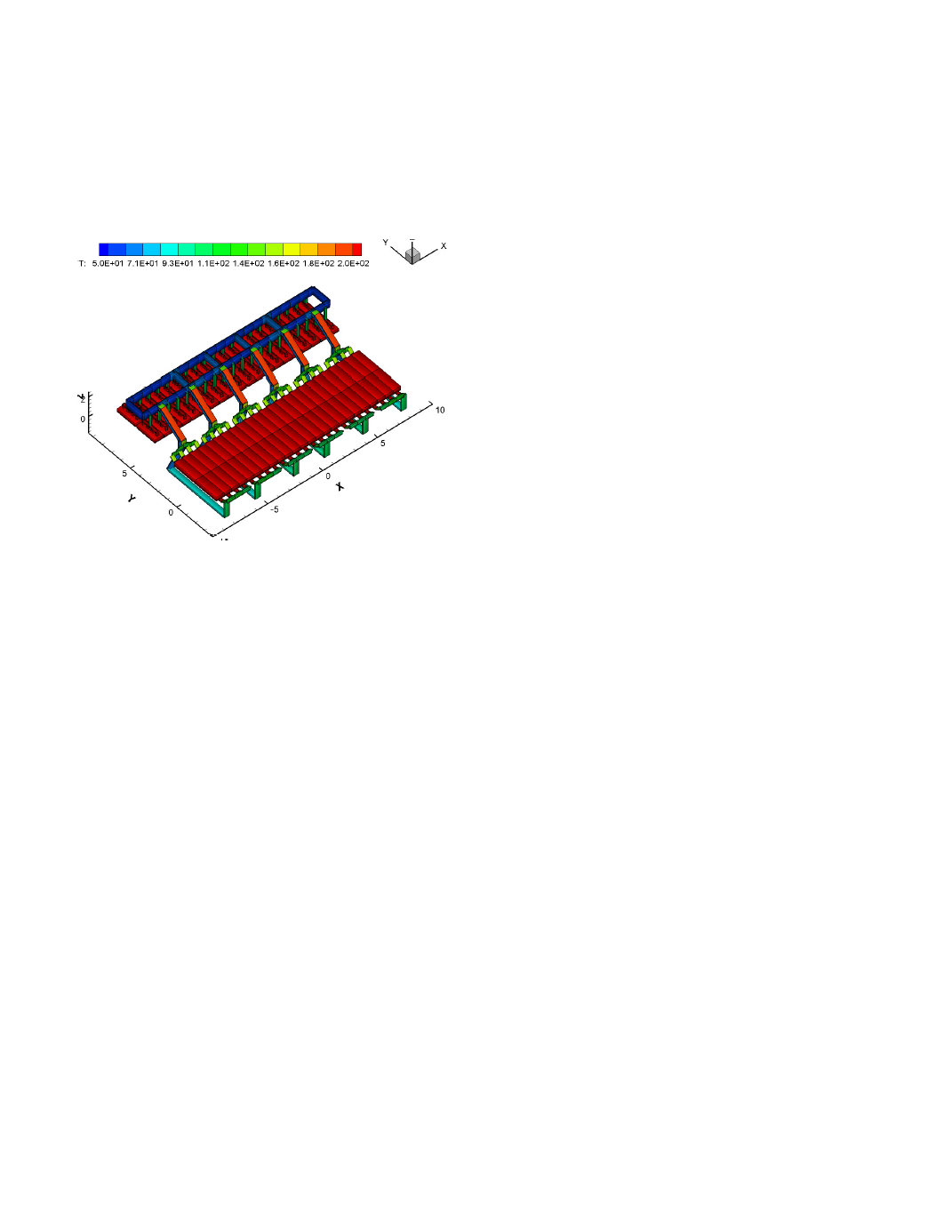
creating and solving the full cell network as well (see figure 8).
BUSNET results are as follow: the maximum temperature reached
in the positive busbar is 94ºC and in the negative busbar is 197 ºC;
the global busbar network drop is 224 mV with 247.0 kA or 49.4%
passing in the negative or downstream side and 253.0 kA or 50.6%
passing in the positive or upstream side.
model.
negative sides is closer to 50% 50% than both the 3D and 1D
ANSYS
more accurately because the true equipotential condition is at the
metal pad above the cathode block. If the current distribution is not
uniform between the positive and negative sides of the cell, the
potential in the cathode flexibles will not be the same between the
positive and negative sides and this of course have an impact on the
current distribution itself.
accurately compute the busbar network current distribution, it is
important to consider also the cathode block resistance layer as the
two valid equipotential points are the metal pad and the anode
beam not the cathode flexibles and the anode beam.
part of MHD-Valdis is a better tool to carry out a busbar sizing
optimization study. But this is not the only reason, BUSNET user
input file is also quite easy to edit and TECPLOT is a powerful and
easy to learn postprocessor, making BUSNET a user friendly tool
to use.
busbar geometry into a 1D line elements network geometry without
loosing some accuracy.
between the busbar external surfaces and its surrounding has a big
impact on the busbar thermal balance. An improper setup of that
temperature dependent parameter will affect significantly the
accuracy of the model.
busbar network current balance without including the cathode
blocks because the potential at the end of the cathode flexibles is
itself influenced by the current balance.
out a busbar sizing optimization study because it is very efficient,
versatile and user friendly. The maximum accuracy will be obtained
by using an ANSYS
study.
System of Alumina Reduction Cells", Light Metals, TMS,
(1988), 567-573.
41
Al Electrolysis cell: Part 2", Light Metals, TMS, (2004), 453-
459.
Electrolysis Cell", Light Metals, TMS, (2005), 449-454.
Cells: a Generalization of Sele's Criterion", Eur. J. Mech.,
B/Fluids
Flow Res.: Turbulence and Applied MHD, eds. H. Branover
Al Electrolysis cell", Proceedings of the 42
their Surroundings", GeniSim Internal report, (1996).
Aluminium Reduction Cell Thermal Balance using only
Temperature Measurements", Proceedings of the 43